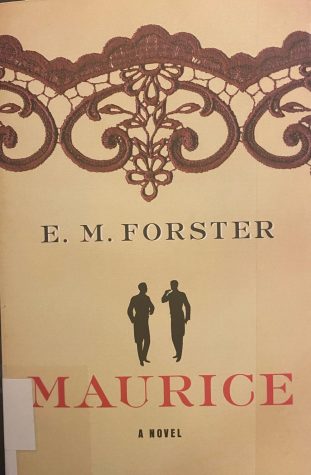Reed Books: Maurice
January 10, 2021
Written in 1913 but not published until 1971, Maurice by E.M. Forster proves its own point of censorship, privacy, and inclusion. Following Maurice Hall from teenagehood to his adult years, the novel is one of the few of its times to explicitly include homosexual characters and queer relationships, upgrading them from subtext to text. While this is probably because Forster never saw the manuscript being published, having died just a year before, it is still noteworthy that this was ever written at all, due to the legal punishment of homosexuality in England during that time. Forster uses themes of darkness, secrecy, and solitude to deepen his generally surface-level writing, and to ask the question: Will there ever be a space for the queer community in mainstream culture?

When Maurice is studying at Cambridge, he meets Clive Durham, who becomes his friend and, eventually, his lover. Their entire relationship is, literally and figuratively, surrounded by darkness. The dorm that Clive lives in is along a poorly lit hallway; the first time the two sleep together, it is after one climbs through the window in the middle of the night; they only find time to talk to each other while staying at Clive’s family’s home during the hours of darkness, when the rest of his family is asleep. While this constant darkness is able to give them the freedom to be together, it is also incredibly restricting and draining, on Maurice particularly. Clive eventually grows tired of Maurice and claims to have “turned” heterosexual, marrying a woman whom he only makes love to at night, when neither can see each other. Evidently, the reader realizes that the darkness in Maurice and Clive’s relationship was not only symbolic of society’s prejudices against them, but of Clive’s own intimacy problems.
Fortunately, as Laurence Scott, writer and occasional contributor to The Guardian, points out in his review of the novel, there is a “good darkness” that Maurice is able to take advantage of before the book’s end. Right before meeting his second love interest, Alec, who becomes his end game, he thinks “Ah for darkness… the darkness where he can be free!” He finds this in Alec; still unable to express their love publicly, but able to find substantial satisfaction in doing it privately. Maurice entertains the possibility of the two of them running away together, into some dark forest, so that they can exist beyond society’s prejudices.
This fantasy of primal escapism repeats itself in all types of queer media, even finding an audience on TikTok and other modern apps. Think of the “cottagecore” aesthetic, popularized on TikTok, which includes the romanticization of, you guessed it, cottage life; floral skirts, meadows, gardens, baking. The reason that this lifestyle is so popular is because of the inherent escapism. Creators fantasize about dropping their responsibilities and running away to a mountain house in Oregon, or completely erasing their identities to build a log cabin in Ireland. The term “cottagecore lesbian”, also coined on TikTok, further codes this aesthetic as queer, even though nothing about its content is inherently non-heterosexual.
For the queer community, a group of people who have been continuously oppressed through the majority of human history, no wonder the idea of escaping to a place free from society is appealing. By writing this into Maurice, Forster confirms the long existence of this fantasy, even if it remains only that to his characters.
Overall, Forster’s Maurice proves that the value of a community’s space in society is immeasurable to its acceptance as a group. No love should have to be shrouded in darkness just to survive; no love should have to romanticize escapism just to have a place to call its own.





















































